Insight & strategy
The insights and strategy behind Viagra’s emotional ‘Love Story’ ad /
How an OTC brand showed that erection problems are not a failure of masculinity, but a symptom of modern life
Contagious I/O
/[This article was first published on Contagious I/O, our online intelligence tool. To find out more click here]
In July, over the counter erectile dysfunction medicine, Viagra Connect, launched an emotional film to break down taboos around this common issue.
According to a June 2020 survey of over 5,000 adults in the UK by Opinium and Viagra Connect, erection problems have a serious impact on relationships in the UK, even resulting in breakups for one in 14 men. While intimacy is an important aspect of any romantic relationship, the survey identified that busy lifestyles and physical and mental health factors, such as stress, are getting in the way of sexual activity and contribute to erection problems.
Working with VMLY&R, London, the brand is opening up the conversation around erection problems and reframing them as a symptom of modern life, tackling the harmful perception that they symbolise a failure of masculinity.
The intimate two-minute film provides a window into the lives of a young couple over a period of time as they overcome the challenges of isolation, erection problems and intimacy. The film ends with the line ‘Don’t let life get in the way of your love story’.
We caught up with Josh Taylor-Dadds, strategy director at VMLY&R, to find out why the agency decided to steer away from the category norm of performance enhancement and how they navigated the complexities of the pharmaceutical category.

Please give an overview of the brand and how it has evolved over the past few years.
In some ways, Viagra Connect needs no introduction – who hasn’t heard of Viagra? It’s one of the most famous brands in the world. Part of the problem, however, is that the reputation precedes the brand. Viagra has been around since the late 1990s; it was a wonder drug – the first of its kind. But since then, the brand has always been positioned by culture.
In media and pop culture, it is the butt of jokes. Think Paul Rudd in the This is 40 bathroom scene or tabloid reports of Hugh Heffner’s ring that hid a Viagra pill inside it, or Anna Vakili [serving a customer who asks for viagra] in the opening credits of 2019’s Love Island. There’s so much shame and stigma around erection problems that Viagra has somewhat been tarred with the same brush.
Viagra Connect was launched in 2018, the over-the-counter (OTC) variant of the notorious older sibling. OTC brands are the pharma brands that people have to ask for in the chemist over the counter – they don’t need a prescription for them, but they can’t just pick them up off the shelf.
The first couple of years after launch have been very successful. The aim for that period was to get the word out that Viagra Connect was now available without a prescription – the availability was news itself and hit the headlines across the country.
Since then, the world and masculinity, in particular, has entered an interesting time. The sharp rise in conversation around toxic masculinity naturally encouraged us to ask questions about how we build a brand like Viagra Connect. What was its place in society? How can it help men tackle taboo subjects such as erection problems amid a conversation about masculinity being in crisis?
It’s when we started asking these questions, that we realised the huge potential for the brand and campaign, and how fascinating a process it would be.
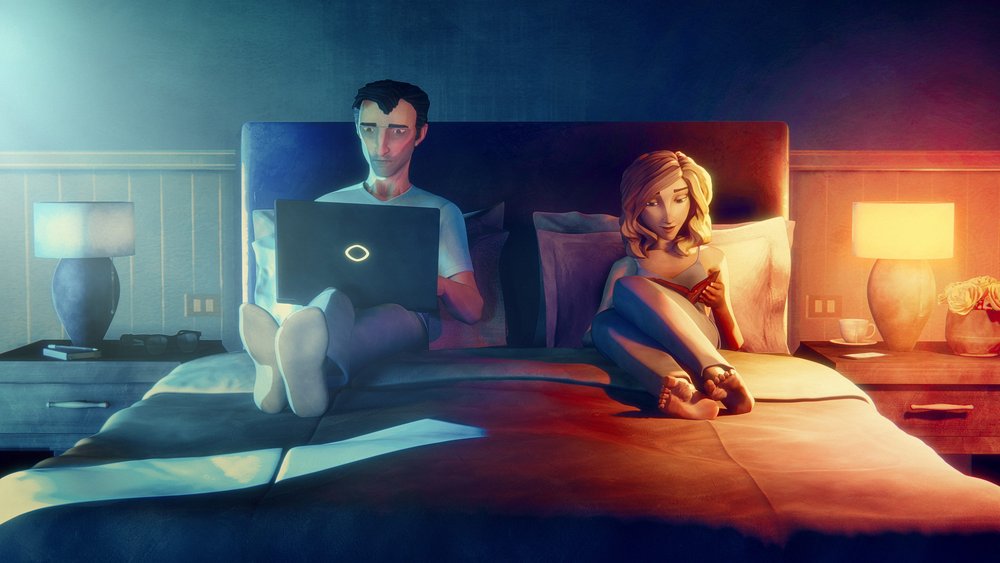
How did the tone of that first (awareness) phase of the campaign differ to the second campaign?
That first campaign was about making people who would already be considering purchasing [Viagra Connect] aware that they could. It was that ‘it’s now available without prescription’ message that was the biggest differentiator that we had to get people aware of. Since it has launched, Viagra Connect has helped around a million men take action. And now the job gets a bit tougher, because what we’re focusing on is anyone who wouldn’t already have thought about treating. They’re not the low hanging fruit anymore.
How would you describe the category that Viagra operates in? What kind of regulations apply to advertising for the product?
OTC pharma is governed by the PAGB. There are a lot of regulations that brand communications have to stick to – inclusion of legals, use of talent, and a real forensic analysis of the language used in any piece of communication.
However, while the product and its communication are regulated, it’s critical to remember that people don’t think or treat pharma and OTC products differently. None of us suddenly forget all emotion and have a purely rational, logic-driven decision-making process in healthcare. There is so much anxiety, fear, pressure, shame and stigma that decision making is more laden with emotion than ever.
It would be easy to get lost in regulations and rules, and forget about the people – how they think, what their needs are, and how they are experiencing the condition. Our job, therefore, is making sure we acknowledge that emotion and leverage the power of creativity to engage our audience and help them to seek treatment.
Josh Taylor-Dadds, VMLY&R

Who is the brand’s target audience? Has this changed over the past few years?
Our core audience is men suffering from erection problems who are not currently treating them. That's already over 3 million men in the UK.
But in the research for this campaign we looked at the broadest possible thinking of what influences these men. Men are not making their treatment decisions solely based on their own perceptions. They’re driven to action or inaction, heavily influenced by their partners, mates, work colleagues, football clubs, and society at large.
At one point, somewhat flippantly, we discussed the audience as ‘any adult with or around a penis’, and that’s sort of true. From a brand purchase perspective, we have a very focused audience, but at a secondary influencer level it really is all of society.
Josh Taylor-Dadds, VMLY&R
Who are the brand’s key competitors? Has this competitive set changed over the past few years?
There are a few other options out there for men suffering from erection problems – from less scientific herbal treatments at one end, to prescription medications such as Viagra or Tadalafil (or Cialis) at the other. That list and how treatments are accessed is also changing with companies like Numan, an online men’s wellness brand that focuses on erection problems and hair loss.
But this isn’t a competitor story at the moment. The core challenge is that not enough men are treating their erection problems, and that’s what we are focusing on changing for now. Erection problems impact at least 4.3 million men in the UK, and just under a million of them are seeking treatment. That’s where the growth for the brand sits at the moment.
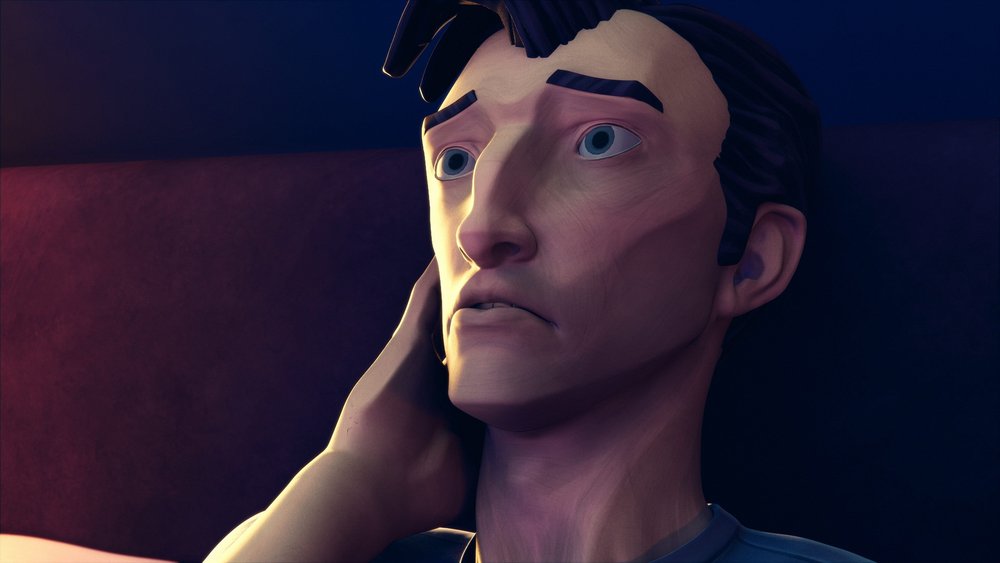
Can you tell us a bit about the buyer and what informs their decision to purchase?
As you might expect, it’s a complicated journey to treat erection problems.
There was a lot of existing research out there, but it all comes from a starting point of ‘this is going to be excruciating to talk about, and if you want to stop talking that’s fine’. We wanted to take a totally different approach. We started by researching the changing cultural conversation around masculinity. We conducted a multi-stage research project to really get under the skin of those shifting dynamics and what they meant for men overall, but in particular what it meant when dealing with and treating erection problems. As part of that research, we also included semiotic and conversation analysis and a fieldwork phase of groups, in-depth interviews and ethnography.
We worked with a brilliant research agency called Copa and went around the country talking to men, women and couples. We started with the broadest possible conversation about what it’s like being a bloke today – what's changing, what isn't, what does that mean for relationships. Then later in the conversation, we opened to sex and erection problems. It was a new way of researching erection problems – chatting about life and leading into sex and problems in sex as a part of that. That approach unearthed a type of conversation with men that we’d never been able to get to before.
One of the first things we found was a bit of an unmasking of masculinity overall – the idea that masculinity isn’t in crisis, it’s in flux. We all recognise that there has been a lot of discussion about the toxic elements of masculinity. Still, when we talked to men, they also spoke about lots of positivity in modern masculinity. They told us about how they see themselves as a more central part of their families than their fathers’ generation was able to be, how men today can show more emotion, that vulnerability is not necessarily a weakness, and critically how that will be different again for their sons’ generation. While there are lots of issues in masculinity, there is also so much light and positivity that is less trendy to talk about in the media.
When the conversation turned to erection problems, however, there was a stark contrast – this was something they saw little change in. It couldn’t be discussed with partners or mates. It wasn’t something to be acknowledged unless absolutely necessary and was equivalent to a ‘failure’ of masculinity. While some topics that were once taboo are changing, like mental health, erection problems were not benefiting from the positive aspects of modern masculinity.
Erection problems are seen as the ultimate failure of masculine identity. The self-blame and shame attached to that supposed failure stop men leaning into the openness of modern masculinity and instead traps them in an ‘old’ way of thinking – being unable to discuss or acknowledge the issue until there is no other option.

Did you receive a brief for this campaign?
The client brief really evolved throughout the research process. Initially the ask was about the second phase of launch. Now that people were aware Viagra Connect was available without prescription, how would we drive continued growth? But as the research revealed a bigger opportunity to really tackle misconceptions and shift the dial on how our society talks about erection problems, we revisited the brief with the client and collectively refined the ambition.
We're really lucky that we had clients who were up for recognising that and challenging the status quo. It was a real collaborative effort and a credit to the client teams that they were up for having those tough conversations with their leadership about how we make sure that we make the most out of the project.
Josh Taylor-Dadds, VMLY&R
How long has this been in the planning?
Once the launch campaign was out, we started thinking about what comes next and how we progress from there. It's probably been about 18 months in total that we’ve been working on it. There was an awful lot of research that went into it and then getting towards brief. Sometimes you feel like those protracted processes don’t benefit the work and things get diluted and squeezed. But actually in this instance, it was the total opposite.
Did you or the client set out effectiveness metrics beforehand? What does success look like for this campaign?
Success for the campaign is bringing more men into the category and bringing the time that it takes men to seek treatment down – currently, it can take up to three years.
Alongside the client team, we’ve looked at the treatment journey, how long it takes and some of the perceptions that stop men acting. As the campaign progresses, we’ll use that to look at how we’ve impacted key moments and beliefs to increase consideration and purchase. Looking at the length of time it’s taking them [to seek treatment] will be a key metric, but then also looking at the extent to which they associate erection problems with real-life causes rather than self-blame and also their ability to communicate them.
We’ll also be looking at online behavioural data and working with partners to get a richer view of how the campaign has changed things. Social will be a part of it, for example there are some forums on Reddit where men discuss this, and more than looking at the volume, the type of conversation that’s happening will be interesting for us. The rest will be more about online purchase journeys, how long it takes from research to purchase, what types of things people are searching for when they're starting that research process, etc.
At a more macro level, this campaign is potentially the start of a bigger conversation about erection problems which will have long-term benefits for Viagra Connect.
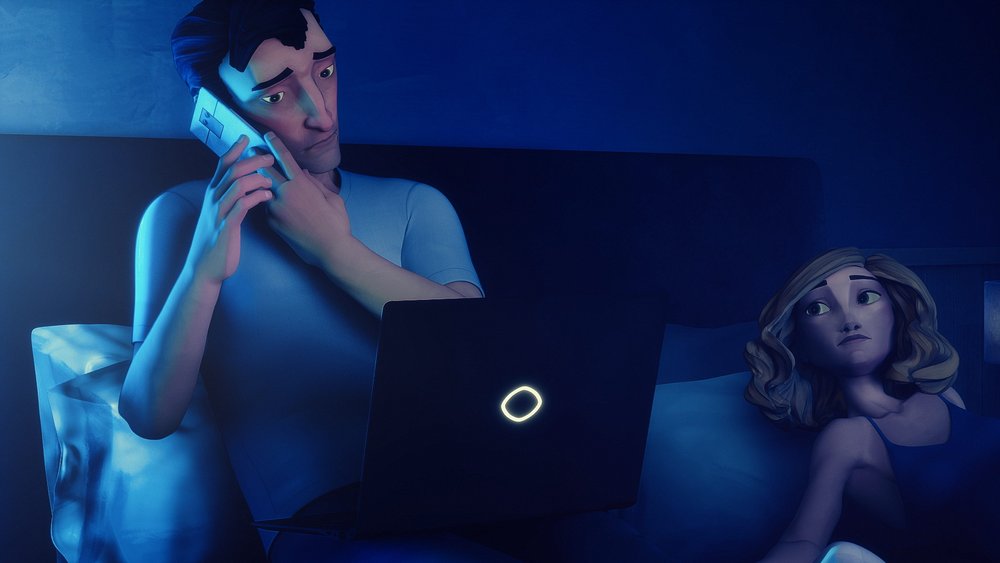
What was the insight behind the idea?
That erection problems are not a failure of masculinity; they can be a symptom of modern life. We knew that the most significant way for us to help men with erection problems act and bring them into the category was to remove pressure – which in itself was a huge ask. We needed to go much deeper than just telling men to do something about it or showing how great life was after having sex again – they knew that already.
The [original strategy] focused around ‘mature masculine confidence’ and the ability for Viagra Connect to reaffirm this mature masculine confidence. We looked at where those sources of confidence come from in men, how that is changing, and what the ways that men feel confident are. How do erection problems disrupt that and how can we help them bring it back?
Another brilliant thing we saw throughout our research process was that men who were able to point the blame elsewhere (men who had been told by a doctor this might occur as a side effect of another condition, or told to expect it due to their diet) talked about significantly reduced anxiety. They felt more able to discuss it with their partners, more likely to purchase Viagra Connect and tackle the issue.
So, we showed the real causes of the issues. We gave all men suffering from erection problems somewhere else to lay the blame. It could be down to stress, long work hours, a poor diet – it could be down to hundreds of different things.
Josh Taylor-Dadds, VMLY&R
As a pharma brand and a medical product, was there seen to be any risk around taking the approach that erection problems can arise from lifestyle rather than underlying health issues?
We worked really closely with the regulatory teams, both the client and the regulators at PAGB. The main focus of the campaign is not to say ‘these are the four causes of erection problems’, it’s to point out to men that it can be any number of things but it’s not a failure of masculinity,
One of the brilliant things that has happened since Viagra Connect launched is that more men have been referred to go and see doctors for concurrent illnesses. Because you have to speak to a pharmacist, because it’s an over-the-counter product, one of the consequences is that if there is something in that conversation with a pharmacist that’s flagged, they'll point you to a doctor.
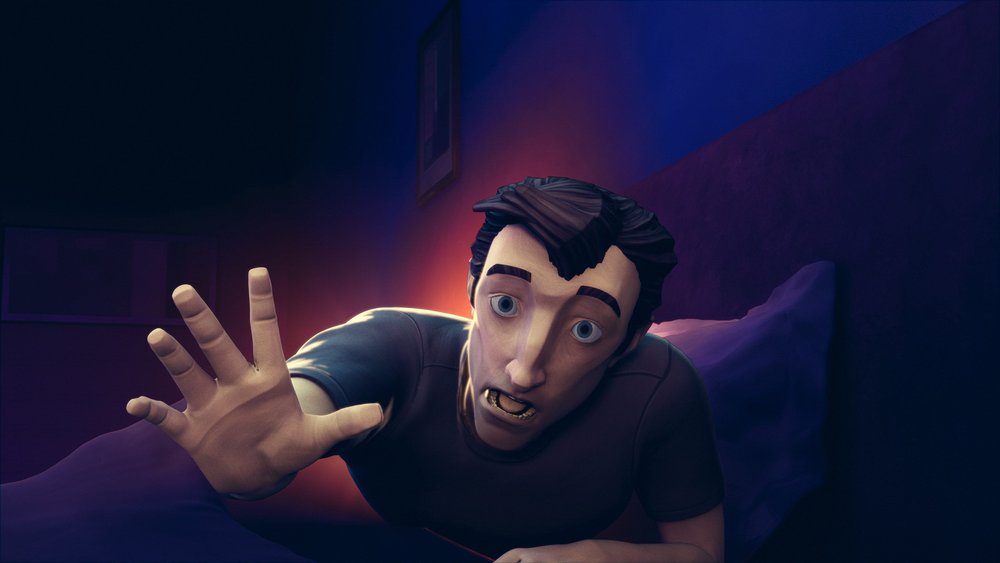
The film feels like a step change from the category norm. How did you convince the client to go for such an unconventional idea?
The norm in the category globally seems to be a focus on male confidence and performance. The narrative is all too often about what happens after the issue has been resolved. That’s an outdated view of masculinity and a bit of a simplistic view of what’s going on. It’s not like these men don’t know there’s a pill to help solve erection problems.
This campaign breaks away from all of that. We are lucky to have clients who engaged with the research element of the process. Having people there to hear the stories of these men firsthand was the key to getting this work made.
How did you condense all of this information into a brief for the creative teams?
The core of the brief is tight: people blame themselves, they should blame the real causes. We need to make them see that erection problems are just a part of life.
But the research again was the game-changer. It was talking about the lives of these individuals that brought the brief to life. The men’s stories explained it better than we ever could have, how some men ended up in this situation and why they couldn’t always find their way out of it. All of the breakthroughs and the devastations of those moments went into the brief.
The challenge was to do justice to the scale of the problem, and how ingrained it is in society, as well as showing the personal intimacy of it – the introversion and isolation.
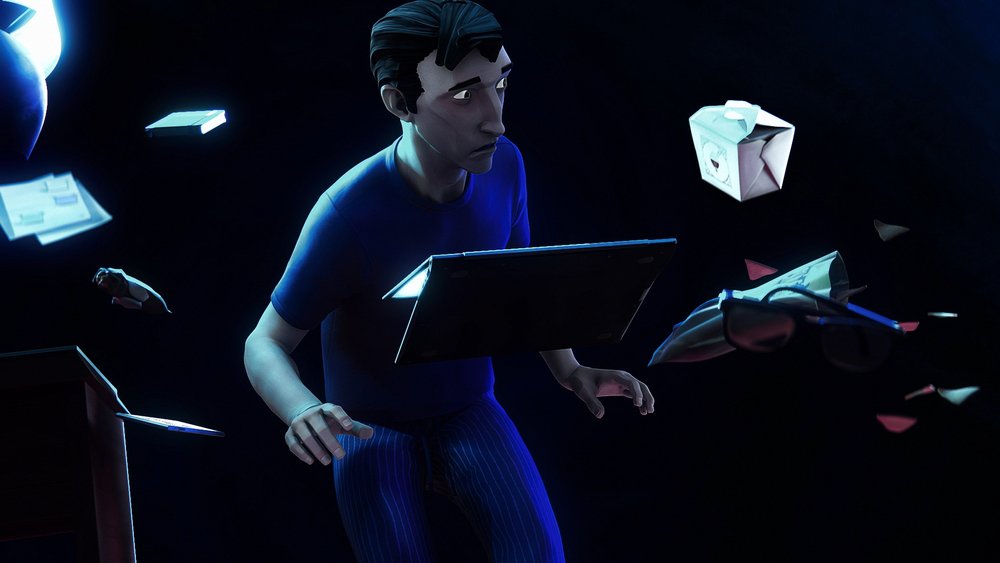
How did this idea come about?
We came at it from a lot of different angles before we got to this idea. It was Tamryn Kerr, our creative director, who came up with the idea of telling a modern love story.
It’s brilliant because of the honesty and universality of the storytelling. It makes this campaign relatable. And it gives anyone a chance to connect with the couple and what they are going through. It allows erection problems and Viagra Connect as a solution to be seen as part of a different conversation – without the gag or giggle.
The reveal that the strains and stresses of modern life can also be the cause of erection problems is the pressure release that we were looking for. From the start, Tamryn wanted the story to be animated. It allowed us to bring the causes and rift between the couple to life in an emotional way that otherwise would have been impossible.
What considerations did you take into account for casting the couple?
In this campaign, it was important to us to try and focus on the intimacy between the couple. From the research we heard so many similar stories of life in the bedroom – the conversations, routines, rituals – from people of all walks of life. The benefit of setting it all in the bedroom is that it’s so focused on the stuff that you take into that private, intimate, special space. To that extent, you [the viewer] are more able to put yourself into it because people’s everyday interactions with their partner in their bedroom are probably more similar than the rest of their everyday life when they leave the front door. I think that that helps to make it universal.
We were very conscious [about the gender roles] and had a lot of discussions about making sure that she was getting on with life, not waiting around for him. So it definitely is something that we’ve thought about a lot and it’s been considered throughout the process to make sure that as many people as possible can put themselves into that situation. Age is another thing – they’re purposefully slightly younger cast than the launch ad because we wanted to make sure that it reached a slightly broader audience.
Josh Taylor-Dadds, VMLY&R

What challenges did you face along the way and how did you overcome them?
When talking about how to tap into shifts in masculinity, smashing taboos and defining a place in the world for a brand like Viagra Connect, it’s so easy to get caught up in a stompy, crusading strategy demanding change with some brash, shouty work. There’s nothing wrong with that in and of itself, some briefs totally require it, but it wouldn’t have been helpful here. I’m proud we avoided that.
We kept coming back to ‘but is this really going to remove pressure’, that was a helpful pilot light in guiding the development of the campaign.
Tell us about the media plan in place – what channels are you using and why? Is there any particular targeting in place? How did you ensure this would create noise?
We’ve worked closely with other great agencies across WPP to ensure the campaign is heard – a combined effort with Wavemaker, Ogilvy Health, BCW and Geometry. The global health pandemic meant there was a lot of flux in our planning, but from a media perspective, the entire team was guided by trying to get the campaign into places of ‘perceived scale’ – spots where it feels like the campaign is unmissable, that everyone must be seeing it.
Sports is obviously a big one, especially given the audience, and we’ve also made sure that the content it’s around feels like the water cooler moments that people are talking about. Another thing that initially we talked about but aren’t running at the moment [due to Covid-19] is cinema and also out of home placements, where it felt like everyone would see it.
Beyond the media, there’s been a big PR push to get the people talking about the impact erection problems can have on their intimate life with new data coming out to support the campaign.
We also worked with pharmacists and retailers to look at how we really get them excited about the campaign and bring it to life across their channels too.
There’s a lot more still to come, but the initial reaction has been fantastic. People are reacting to the emotion of the story. And many were surprised that a brand like Viagra Connect would tell a story in this way. The campaign has also resonated with people, more than even we could have predicted. Our work focuses on the strains and stresses of modern life which have been amplified globally by the current health crisis and remote working situations. Highlighting them as causes of erection problems and shifting the blame now is incredibly timely.

What do you think the engagement with pharmacists adds to the delivery?
Ogilvy Health are the partner agency that we work with to engage pharmacists and train them around the product. It was a great opportunity because one of the things that we've always talked about doing with Viagra Connect is trying to shift it away tonally from a doctor-patient relationship to an adult-to-adult relationship, and this not about talking down to men as if they’re sick, ill men who need help and ‘we'll fix you’. Instead trying to empower men to feel like this is something that they can tackle and the ability to problem-solve is obviously a great source of masculine confidence.
One of the great things about this product being available over the counter is that you capture different types of conversations and interactions that you wouldn't ordinarily have.
Josh Taylor-Dadds, VMLY&R
What has been your single greatest learning from this campaign?
It’s been a real lesson in framing. We went on a journey with people to open up conversations that, at the outset, looked impossible.
In recent years there has been so much progress in so many social conversations and norms, but this was one that no one wanted to touch. There wasn’t a groundswell here, or a desire from anyone – even men suffering from erection problems – to open up about this stuff.
But in finding a way to frame that conversation differently, we’ve found a way to start that conversation. The campaign is a testament to getting under the skin of an issue that seemed so out of reach for anyone to openly talk about.
[This article was first published on Contagious I/O, our online intelligence tool. To find out more click here]
Want more of the same? /
We don’t just write about best-in-class campaigns, interviews and trends. Our Members also receive access to briefings, online training, webinars, live events and much more.







